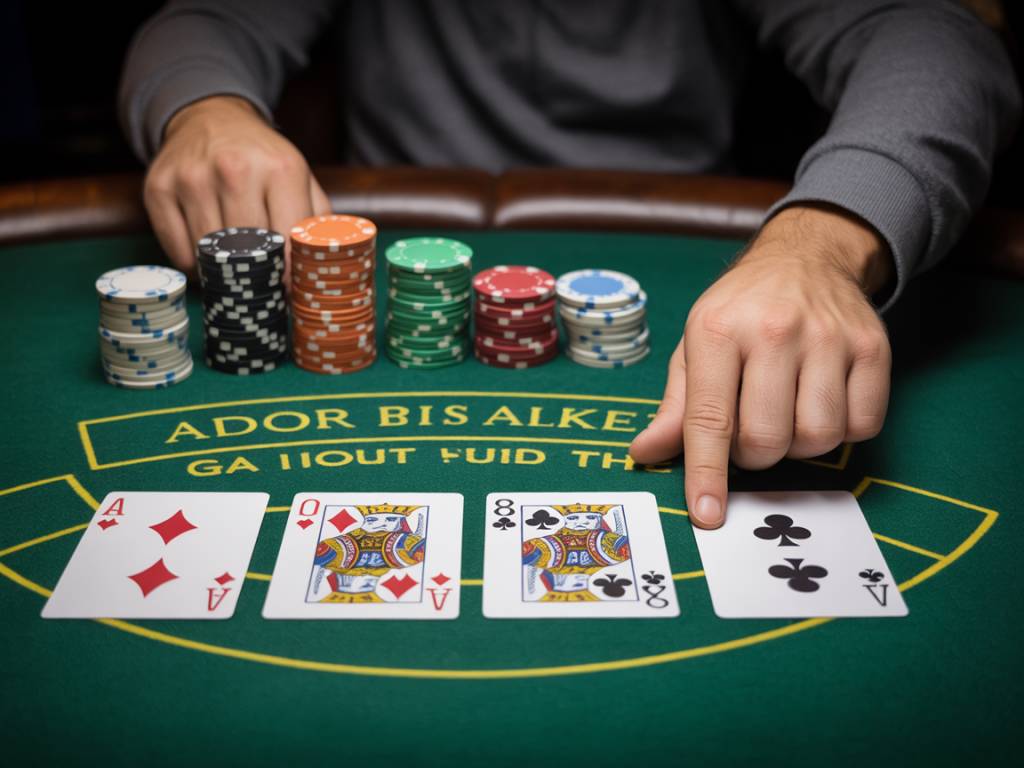Playing Too Many Hands Pre-Flop 🃏🚫
One of the most common mistakes I see at the tables—especially among beginners—is playing way too many hands pre-flop. It’s easy to fall into the trap of thinking any two cards can win, and while that’s technically true, playing every hand will bleed your stack quickly.
A good poker strategy starts with hand selection. Stick to stronger starting hands like big pocket pairs (e.g., AA, KK), high-suited connectors (like AK suited), and avoid weak combinations. Position matters too—play tighter in early position and loosen up as you move toward the button.
Want to up your pre-flop game? Consider investing in a strategy chart or poker training tool to keep nearby when you’re learning.
Not Paying Attention to Position 📍
Poker is a game of information, and your position at the table determines how much information you get. Yet, so many players disregard position and play as if it doesn’t matter. Trust me—it matters a lot.
Your position gives you the luxury of seeing how others act before it’s your turn. Being in a late position lets you bluff more effectively, control pot size, and make more informed decisions. Always take position into account when deciding whether to bet, raise, or fold.
Failing to Adjust Bet Sizing 💰📊
Bet sizing is both an art and a science. Bet too little and you offer enticing pot odds to opponents; bet too much and you risk scaring them off or losing more on a bluff. An incorrect bet size can be worse than not betting at all.
Here’s a golden rule: tailor your bet to your objective. Are you value betting with a strong hand, or bluffing with air? Post-flop bets usually range from 50% to 100% of the pot, depending on texture and your read on the opponent.
Being Too Aggressive or Too Passive 😤😶
We all know players on both extremes: the wild bluffer who bets every street and the calling station who never raises. Neither extreme leads to consistent wins.
Balance is key. Aggression is generally good—it puts pressure on your opponents and allows you to build pots when you’re ahead. But unchecked aggression without solid reads can be costly. Likewise, passivity can result in missing value from solid hands or getting bullied by more aggressive players.
Chasing Draws Without Proper Odds 🎯🔍
Draws can be tempting—those four to a straight or four to a flush look so close to hitting. However, chasing these with poor pot odds is often a path to losing money.
If the pot odds you’re getting don’t justify the cost of calling to try and complete your draw, it’s usually better to fold. Learn how to calculate pot odds and equity—it’s a foundational skill for any serious poker player.
Ignoring Opponent Tendencies 👀🧠
Poker is a game against other people, not robots, and failing to pay attention to how your opponents play is a missed opportunity. Whether you’re playing live or online, every player shows patterns—some are loose, some are tight, some love to bluff.
If you spot a player who folds to pressure, add more bluffs to your range. Against a calling station, don’t bluff—value bet instead. Keeping notes during your sessions or using HUDs in online poker can help track tendencies over time.
Not Protecting Your Hand When Necessary 🛡️
One critical error I’ve seen many players make is slow-playing strong hands without considering the board texture. If the board is full of potential draws and you have a monster, bet and protect your hand!
Don’t let opponents draw for free or cheap. A mistake like this can cost you an entire stack if they hit on the river. Strong hands don’t win automatically—they need proper protection along the way.
Overvaluing Marginal Hands 🃏💔
It’s all too easy to fall in love with a top pair or a weak kicker, especially when you’ve been starved for action. But not all top pairs are created equal, and many players get married to marginal hands even in the face of aggression.
Ask yourself: what hands could be beating me? Am I betting for value, or just because I don’t want to give up? Train yourself to fold marginal hands when the signs point to being beaten—it’s a skill that separates amateurs from pros.
Tilting and Emotional Betting 😡🌀
Tilt is the silent bankroll killer. We’ve all been there—getting sucked out on the river, losing with AA to a junk hand. It hurts. But if you let your emotions drive your betting decisions, you’re setting yourself up for disaster.
Recognizing tilt is the first step; taking a break is the second. Some players try to “win it back” by playing looser or more aggressively, but this rarely works. If you feel emotion creeping into your decisions, step away from the table—even if it’s just for a few hands.
Lack of a Long-Term Strategy 🧠📈
Many poker players focus too much on short-term results. They win a few hands, think they’ve cracked the code, and jump into higher-stakes games. Or worse, they chase losses in a panic. This reactive style of play is unsustainable.
To truly improve, you need a growth mindset. Study your hands, work with poker solvers, read strategy books, join poker forums, and learn from better players. A consistent, solid approach will bring more success than sporadic big wins.
Poker is a complex and nuanced game, and even the best players in the world continuously work to refine their strategy. By avoiding these common betting mistakes and staying committed to learning, you’ll be well on your way to improving your win rate and confidence at the table. 🏆🃠

